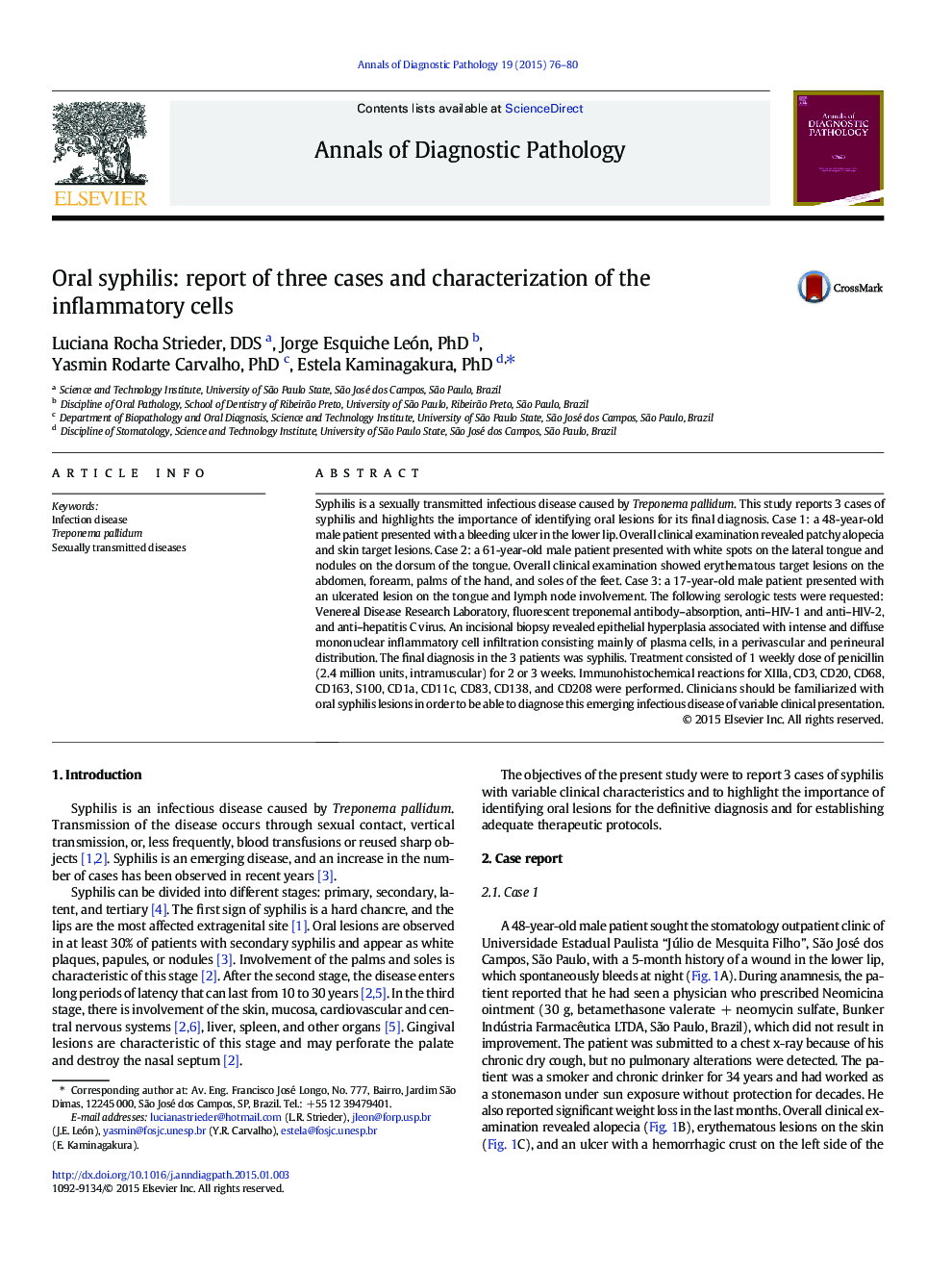| Article ID | Journal | Published Year | Pages | File Type |
|---|---|---|---|---|
| 6214955 | Annals of Diagnostic Pathology | 2015 | 5 Pages |
Syphilis is a sexually transmitted infectious disease caused by Treponema pallidum. This study reports 3 cases of syphilis and highlights the importance of identifying oral lesions for its final diagnosis. Case 1: a 48-year-old male patient presented with a bleeding ulcer in the lower lip. Overall clinical examination revealed patchy alopecia and skin target lesions. Case 2: a 61-year-old male patient presented with white spots on the lateral tongue and nodules on the dorsum of the tongue. Overall clinical examination showed erythematous target lesions on the abdomen, forearm, palms of the hand, and soles of the feet. Case 3: a 17-year-old male patient presented with an ulcerated lesion on the tongue and lymph node involvement. The following serologic tests were requested: Venereal Disease Research Laboratory, fluorescent treponemal antibody-absorption, anti-HIV-1 and anti-HIV-2, and anti-hepatitis C virus. An incisional biopsy revealed epithelial hyperplasia associated with intense and diffuse mononuclear inflammatory cell infiltration consisting mainly of plasma cells, in a perivascular and perineural distribution. The final diagnosis in the 3 patients was syphilis. Treatment consisted of 1 weekly dose of penicillin (2.4 million units, intramuscular) for 2 or 3 weeks. Immunohistochemical reactions for XIIIa, CD3, CD20, CD68, CD163, S100, CD1a, CD11c, CD83, CD138, and CD208 were performed. Clinicians should be familiarized with oral syphilis lesions in order to be able to diagnose this emerging infectious disease of variable clinical presentation.
